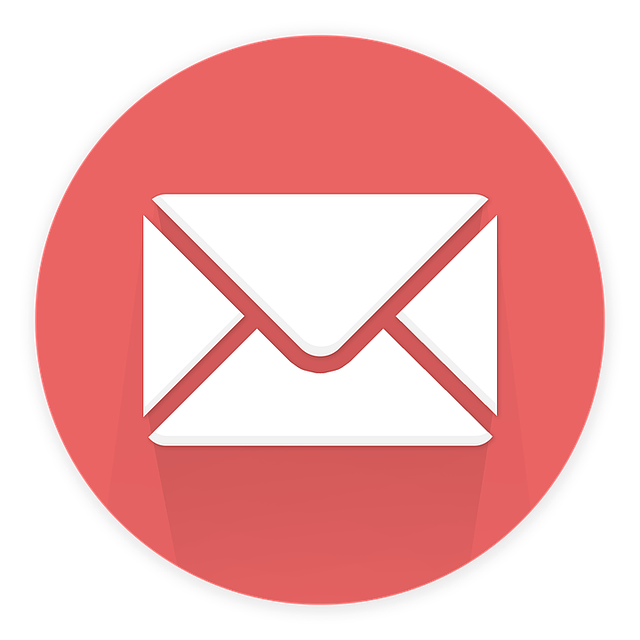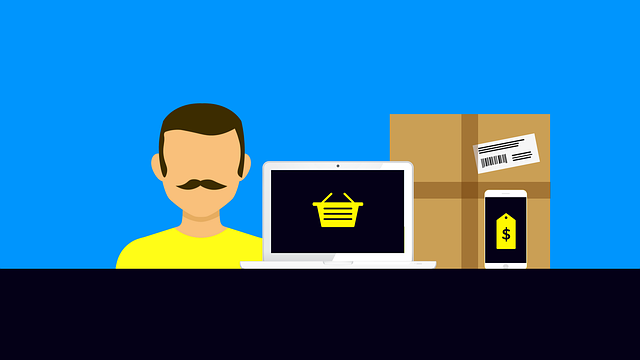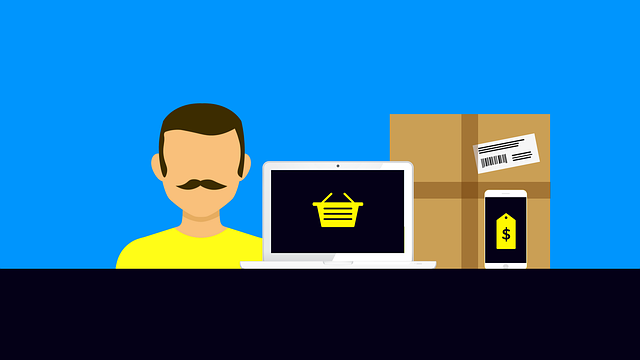Imagine a world where every student receives personalized emails tailored to their specific needs and interests.nnPicture an email marketing campaign that automatically sends targeted messages at the perfect time, guiding learners through their educational journey.nnThis is the power of email marketing in the realm of education and e-learning.
In this article, we will explore eight email marketing trends that are revolutionizing the way educational institutions and online learning platforms engage with their audiences.nnFrom personalization and segmentation to automation and drip campaigns, these trends are reshaping the educational landscape, offering a more tailored and interactive experience for students and learners of all ages.
We will also delve into the importance of mobile optimization, interactive and dynamic content, as well as behavioral tracking and analytics.nnFurthermore, we will discuss the integration of email marketing with social media and other platforms, providing a holistic and seamless communication strategy.
Get ready to discover the future of email marketing in education and e-learning, and learn how these trends can help you effectively connect with your target audience, drive engagement, and ultimately, achieve educational success.
Key Takeaways
- Personalization and segmentation enhance the student experience.
- Automation and drip campaigns streamline email marketing efforts.
- Mobile optimization is crucial for delivering a seamless user experience.
- Interactive and dynamic content enhances the learning experience.
Personalization and Segmentation
You’ll love how personalization and segmentation can take your email marketing for education and e-learning to the next level!
By tailoring your content to individual recipients, you can create a more engaging and personalized experience for your audience. Personalized content allows you to address each recipient by name, making the email feel more personal and relevant.
Additionally, targeted campaigns enable you to send specific messages to different segments of your audience, based on their interests, preferences, or behaviors. This level of customization not only improves the effectiveness of your email marketing efforts, but also helps build stronger relationships with your subscribers.
As you’ll see in the next section about automation and drip campaigns, these strategies work hand in hand to maximize the impact of your email marketing efforts.
Automation and Drip Campaigns
Are you looking for ways to streamline your email marketing efforts and nurture leads? One effective strategy is to set up automated email sequences, which allow you to send targeted messages to your subscribers at specific intervals.
Additionally, using drip campaigns can help you nurture leads by sending them a series of personalized emails that gradually guide them towards making a purchase or taking a desired action.
By incorporating automation and drip campaigns into your email marketing strategy, you can save time, increase engagement, and ultimately drive more conversions.
Set up Automated Email Sequences
Get ready to streamline your email marketing efforts with automated email sequences – it’s a game-changer for education and e-learning! Automated email workflows allow you to set up a series of targeted emails that are automatically sent to your subscribers based on their actions or behaviors. This helps you deliver personalized content and nurture leads more effectively.
To illustrate the power of automated email sequences, consider the following table:
| Action | Email 1 | Email 2 |
|---|---|---|
| Sign up for a webinar | Thank you for signing up! | Reminder: Webinar starts tomorrow |
| Attend webinar | Recap: Key takeaways from the webinar | Exclusive offer: 20% off on our courses |
| Purchase a course | Congratulations on your purchase! | Tips for getting the most out of your course |
By setting up these automated sequences, you can engage your subscribers at the right time with relevant content, increasing the chances of conversion.
Now, let’s explore how you can use drip campaigns for nurturing leads.
Use Drip Campaigns for Nurturing Leads
Ready to take your lead nurturing to the next level? Let’s dive into how drip campaigns can help you build stronger relationships with your potential customers.
Drip campaigns are a powerful tool for education and e-learning businesses looking to nurture leads effectively. By sending a series of automated emails at predetermined intervals, you can keep your leads engaged and informed throughout their journey.
Drip campaigns allow you to deliver targeted content based on the interests and behaviors of your leads, increasing the chances of conversion. With the right content and timing, drip campaigns can significantly improve lead nurturing strategies.
By providing valuable information, addressing pain points, and offering personalized solutions, you can build trust and credibility with your potential customers.
Now, let’s explore how to optimize your email campaigns for mobile devices to ensure maximum engagement.
Mobile Optimization
Designing emails for mobile devices is crucial in today’s digital landscape. With the majority of people accessing emails on their smartphones or tablets, it’s important to ensure that your email templates are responsive and optimized for mobile viewing.
By doing so, you can deliver a seamless and user-friendly experience to your audience, increasing the chances of engagement and conversion.
Design Emails for Mobile Devices
Make sure your emails are mobile-friendly to ensure a seamless user experience on smartphones and tablets, allowing your audience to effortlessly engage with your e-learning content.
To design emails for mobile devices effectively, follow these tips:
-
Simplify your layout: Opt for a clean and uncluttered design that is easy to navigate on smaller screens.
-
Use a responsive template: Ensure your email template adjusts automatically to fit different screen sizes, optimizing readability and functionality.
-
Use concise and scannable content: Break up text into smaller paragraphs, use bullet points, and make your call-to-action buttons prominent.
-
Optimize images: Compress images to reduce loading time and ensure they are properly displayed across devices.
By implementing these mobile-friendly design strategies, you can enhance the user experience and increase engagement with your e-learning content.
To further enhance the mobile experience, ensure responsive email templates are in place for a consistent and professional look across various devices.
Ensure Responsive Email Templates
Now that you’ve designed your emails to be mobile-friendly, it’s time to ensure that they’re also responsive across different devices.
Responsive design is crucial for email marketing success. It allows your emails to adapt to different screen sizes and resolutions, ensuring a seamless experience for your subscribers, regardless of the device they’re using.
Additionally, responsive email templates improve email deliverability. They reduce the chances of your emails being marked as spam or deleted unread. By investing in responsive design, you’re showing your subscribers that you value their experience and are willing to go the extra mile to provide them with easy-to-read and interactive content.
So, let’s dive into the next section about interactive and dynamic content, which will take your email marketing to the next level.
Interactive and Dynamic Content
Engage your audience with captivating interactive content that will leave them excited to learn and eager to explore. Take advantage of the latest email marketing trends by incorporating gamification and interactive quizzes into your email campaigns.
Here are four ways to create an immersive learning experience for your audience:
- Gamify your lessons by turning them into interactive games that challenge and motivate learners.
- Use interactive quizzes to assess knowledge and provide instant feedback, making the learning process engaging and enjoyable.
- Include interactive videos that allow learners to interact with the content and make choices that affect the outcome.
- Incorporate interactive infographics and interactive eBooks to present information in a visually appealing and interactive way.
By leveraging these interactive elements, you can enhance the effectiveness of your educational emails and provide a more engaging learning experience.
Next, we’ll explore how behavioral tracking and analytics can further optimize your email marketing strategy.
Behavioral Tracking and Analytics
In this discussion, you’ll explore the importance of behavioral tracking and analytics in email marketing. By tracking recipient behavior and engagement, you can gain valuable insights into your audience’s preferences and interests.
Analyzing email metrics allows you to optimize your campaigns and improve their effectiveness. With these strategies, you can make data-driven decisions to enhance the performance of your email marketing efforts.
Track Recipient Behavior and Engagement
Pay attention to how your recipients are interacting with your emails and use that data to improve your email marketing strategy. Tracking recipient behavior and engagement is crucial for optimizing recipient engagement and ensuring email deliverability.
Here are four ways to track recipient behavior and engagement:
-
Click-through rates: Monitor how many recipients are clicking on the links in your emails. This indicates their level of interest and engagement with your content.
-
Open rates: Keep an eye on how many recipients are opening your emails. Low open rates may indicate issues with subject lines or sender reputation.
-
Unsubscribe rates: Track the number of recipients unsubscribing from your emails. This can help you identify any issues with your content or frequency.
-
Conversion rates: Measure how many recipients are taking the desired actions after opening your emails, such as making a purchase or signing up for a webinar.
By analyzing these metrics, you can gain valuable insights to optimize your email marketing strategy.
In the next section, we’ll discuss how to analyze email metrics for optimization.
Analyze Email Metrics for Optimization
Take a moment to analyze your email metrics, and you’ll discover valuable insights that can optimize your email strategy. By tracking email deliverability and subject line optimization, you can improve your overall email marketing performance.
Email deliverability is a crucial metric to monitor because it determines whether your emails are successfully reaching your recipients’ inboxes. By keeping an eye on your deliverability rates, you can identify and address any issues that may be hindering your emails from being delivered.
Another important aspect to analyze is your email subject lines. A well-crafted subject line can significantly impact your open rates. Test different subject line variations to see which ones resonate best with your audience and result in higher open rates.
To help you get started with analyzing your email metrics, here’s a table showcasing key metrics to track and optimize:
| Metric | Description |
|---|---|
| Open Rate | Percentage of recipients who open your email |
| Click-Through Rate (CTR) | Percentage of recipients who click on links in the email |
| Conversion Rate | Percentage of recipients who complete a desired action |
| Bounce Rate | Percentage of emails that failed to be delivered |
| Unsubscribe Rate | Percentage of recipients who unsubscribe from your emails |
By analyzing these metrics, you can identify areas for improvement and make data-driven decisions to enhance your email marketing strategy. As you dive into the world of email metrics, it’s essential to also consider integrating your efforts with social media and other platforms to maximize your reach and engagement.
Integration with Social Media and Other Platforms
Connect your email marketing with your social media campaigns to increase your reach and engagement. By integrating email with CRM and marketing automation tools, you can streamline your processes and personalize your messaging for better results.
Take advantage of the power of social media and other platforms to enhance your email marketing strategy and drive more conversions.
Connect Email Marketing with Social Media Campaigns
Utilizing social media in conjunction with email marketing allows for a seamless integration of platforms, creating a cohesive online presence that enhances engagement and boosts brand awareness. By connecting your email marketing with social media campaigns, you can leverage the power of both channels to maximize your reach and impact.
Here are three key ways to make the most of this integration:
-
Cross-promote: Share your email content on social media platforms to reach a wider audience and encourage them to sign up for your newsletter or updates.
-
Social sharing buttons: Include social sharing buttons in your emails to make it easy for recipients to share your content with their social networks, increasing its visibility and potential reach.
-
User-generated content: Encourage your email subscribers to share their experiences and feedback on social media, creating a buzz around your brand and fostering a sense of community.
Integrating email with CRM and marketing automation tools takes your marketing efforts to the next level. [Transition into the subsequent section]
Integrate Email with CRM and Marketing Automation Tools
Now that you’ve learned how to connect email marketing with social media campaigns, it’s time to take your email marketing strategy to the next level. Integrate it with CRM and marketing automation tools. By doing so, you can enhance your email personalization efforts and gain valuable insights from email analytics.
Integrating email with CRM allows you to have a unified view of your contacts and their interactions with your emails. This enables you to send targeted and personalized emails based on their preferences and behavior. It not only increases the effectiveness of your email campaigns but also improves customer satisfaction and engagement.
Additionally, integrating email with marketing automation tools enables you to automate and streamline your email marketing processes, saving you time and effort. You can set up triggered emails based on specific actions or events, ensuring that your communications are timely and relevant.
Don’t miss out on the opportunity to leverage these powerful tools to drive better results and maximize the impact of your email marketing efforts.
Frequently Asked Questions
How can personalization and segmentation enhance the effectiveness of email marketing in the education and e-learning industry?
To truly make an impact with email marketing in the education and e-learning industry, personalization and segmentation strategies are your secret weapons.
By tailoring your messages to the individual needs and interests of your students, you can grab their attention and keep them engaged.
Leverage the power of segmentation to send targeted emails that resonate with specific groups, such as alumni or prospective students.
With these tactics, you’ll not only enhance the effectiveness of your email marketing but also boost student engagement and retention.
What are some examples of automation and drip campaigns that can be implemented in email marketing for educational institutions?
To implement automation campaigns and drip campaign strategies in email marketing for educational institutions, you can set up automated welcome emails for new subscribers. These emails can include engaging content and resources.
You can also create drip campaigns for different stages of the student journey. For example, you can send reminders for application deadlines or provide personalized course recommendations based on their interests.
These strategies help save time and ensure consistent communication, ultimately boosting engagement and conversions.
Why is mobile optimization crucial for email marketing in the education and e-learning sector, and what strategies can be used to achieve it?
Mobile optimization is crucial for email marketing in the education and e-learning sector. To achieve it, you should focus on implementing mobile optimization strategies and best practices for mobile-friendly emails.
These strategies include using responsive email templates, optimizing subject lines for mobile devices, using concise and scannable content, and incorporating clear and prominent calls to action.
By prioritizing mobile optimization, you can ensure that your emails are easily accessible and engaging for your target audience on their mobile devices.
How can interactive and dynamic content be incorporated into email marketing campaigns for educational organizations?
Create engaging and interactive email marketing campaigns for educational organizations by incorporating dynamic content. Utilize gamification in emails to capture your audience’s attention and encourage participation.
Add interactive elements such as quizzes, surveys, or interactive videos to make your emails more engaging and memorable.
Personalize the content based on the recipient’s interests and preferences to increase their involvement.
By incorporating interactive engagement and gamification, you can drive higher open rates, click-through rates, and ultimately improve your overall email marketing success.
What are the benefits of behavioral tracking and analytics in email marketing for the education and e-learning industry, and how can they be utilized effectively?
Are you tired of sending generic emails to your education and e-learning audience? Personalization is crucial in email marketing for education and e-learning, and that’s where behavioral tracking and analytics come in.
By analyzing data on your subscribers’ behaviors, you can tailor your emails to their interests and needs. This not only increases engagement but also improves conversion rates.
Utilizing data analytics effectively allows you to create targeted and relevant campaigns, ultimately leading to better results for your education organization.
Conclusion
You’ve now explored the exciting world of email marketing trends in education and e-learning.nnBy embracing personalization and segmentation, automation and drip campaigns, mobile optimization, interactive and dynamic content, behavioral tracking and analytics, and integration with social media and other platforms, you’ll be able to stay ahead in this ever-evolving landscape.nnSo, go forth and harness these trends like a captain navigating uncharted waters, and watch your email marketing efforts soar to new heights!









